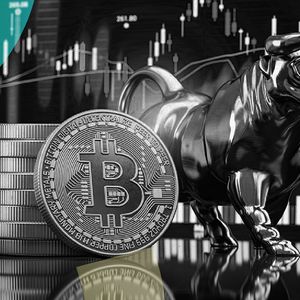In a move that has sent ripples through the digital asset community, South Korean crypto exchange Bithumb recently announced a significant decision concerning the popular decentralized exchange (DEX) token, GMX. This isn’t just another routine update; Bithumb has officially designated GMX as a closely monitored asset , a classification that immediately signals caution and heightened scrutiny. For anyone involved in the crypto space, especially those holding GMX or trading on Bithumb, understanding the gravity of this announcement is paramount. What exactly prompted this designation, and what does it mean for the future of GMX and its holders? What Does Bithumb’s Closely Monitored Asset Designation Mean for GMX? When a major crypto exchange like Bithumb flags an asset, it’s a clear indication that something is amiss. The ‘closely monitored asset’ status isn’t a delisting, but it’s certainly a step in that direction if issues aren’t resolved. Bithumb’s official statement highlighted a critical reason for this decision: a confirmed security incident . This incident, affecting either the project team’s managed wallet or the underlying distributed ledger that GMX operates on, remains unresolved or its cause unidentified. This ambiguity adds an extra layer of concern for investors. For users, this designation often comes with a set of implications: Increased Scrutiny: Bithumb will be keeping a very close eye on GMX’s development, operational stability, and, most importantly, the resolution of the identified security flaw. Potential Trading Restrictions: While not immediately imposed, closely monitored assets might face limitations on trading pairs, withdrawal delays, or even temporary suspensions if the situation escalates. Heightened Risk: Investors are implicitly warned that the asset carries higher risk. This can lead to increased price volatility as some holders might choose to de-risk by selling their tokens. It’s crucial for traders and investors to be aware that such designations are not made lightly. They stem from a thorough internal review process by the exchange to protect its users and maintain the integrity of its platform. Unpacking the GMX Security Incident: What We Know So Far The core of Bithumb’s decision revolves around a confirmed security incident involving GMX . While the specific details of the incident have not been fully disclosed by Bithumb, the exchange pointed to a ‘hacking’ event affecting either the project team’s wallet or the underlying distributed ledger. This distinction is important: Project Team Wallet Hacking: This would imply a breach of the team’s internal operational funds or development wallets. Such an event could indicate vulnerabilities in the team’s security protocols or a direct attack on their digital infrastructure. Distributed Ledger (Blockchain) Incident: This is a more severe scenario, suggesting a potential exploit or vulnerability within the GMX protocol’s smart contracts or the blockchain it operates on (e.g., Arbitrum or Avalanche). A breach at this level could impact the integrity of the GMX token itself or its core functionalities. The fact that the cause of the incident ‘has either not been identified or remains unresolved’ is particularly concerning. This lack of clarity means that the underlying vulnerability could still be present, posing an ongoing risk to the asset and its ecosystem. For a decentralized finance (DeFi) protocol like GMX, which prides itself on security and transparency, this situation demands immediate and thorough investigation by the project team. Navigating the Waters: Your Options as a GMX Holder on Bithumb or Other Crypto Exchanges If you’re a GMX holder, especially on Bithumb , this news might naturally spark some anxiety. Understanding your options and the broader implications for your holdings is key. While Bithumb’s designation is specific to their platform, the underlying security concern could affect GMX’s reputation and market performance across all crypto exchanges . Here are some actionable insights for GMX holders: Stay Informed: Closely follow official announcements from Bithumb, the GMX project team, and reputable crypto news sources. Information regarding the resolution of the security incident will be crucial. Assess Your Risk Tolerance: Consider your personal risk appetite. If the uncertainty is too high, you might consider reducing your exposure to GMX. Consider Self-Custody: For long-term holders, moving your GMX tokens from the exchange to a private wallet (hardware or software) where you control the private keys can offer greater security, especially during periods of exchange scrutiny. However, be aware of transaction fees. Monitor Market Movements: The ‘closely monitored asset’ status can lead to increased volatility. Be prepared for potential price fluctuations as the market reacts to ongoing developments. It’s a stark reminder that while the crypto space offers exciting opportunities, it also comes with inherent risks, and vigilance is always required. Beyond GMX: The Broader Implications for Crypto Exchange Security The situation with GMX and Bithumb underscores a critical aspect of the digital asset ecosystem: the continuous battle against security incident s. Centralized crypto exchange s like Bithumb play a vital role as gatekeepers, and their robust monitoring systems are essential for user protection. This incident highlights: Exchange Due Diligence: Exchanges have a responsibility to conduct thorough due diligence on assets listed on their platforms, continuously monitoring for vulnerabilities or suspicious activities. The Importance of Transparency: While Bithumb announced the designation, further transparency from the GMX team regarding the incident’s specifics and their resolution plan would greatly benefit investor confidence. Evolving Threat Landscape: Hackers and malicious actors are constantly seeking new vulnerabilities. This necessitates continuous innovation in security measures across all layers of the crypto ecosystem, from individual wallets to complex DeFi protocols. To put Bithumb’s action into perspective, here’s a general idea of how exchanges often classify assets based on their risk assessment: Tier/Status Description Implication for Users Regular Listing Standard trading, asset meets all listing requirements. Normal trading operations, no immediate concerns. Closely Monitored Asset Identified issues (e.g., security, operational, regulatory compliance). Increased scrutiny, potential for further action or restrictions. Investment Warning Significant concerns, high risk of delisting due to severe issues. Strong recommendation to exercise extreme caution; consider exiting position. Delisted Asset removed from the exchange, trading halted permanently. Users must withdraw assets by a specified deadline or risk losing them. The ‘closely monitored asset’ status is a clear warning sign, urging caution without immediate panic, but it necessitates a proactive response from both the project team and the users. A Call to Vigilance in a Dynamic Market The designation of GMX as a closely monitored asset by Bithumb serves as a potent reminder of the inherent risks and dynamic nature of the cryptocurrency market. While the immediate cause is an unresolved security incident , the broader lesson is about the constant need for vigilance and informed decision-making. For GMX, the path forward involves swift and transparent action from its development team to identify and resolve the underlying vulnerability. For investors, it reinforces the importance of diversifying portfolios, staying updated on market news, and understanding the implications of exchange-level actions. In the ever-evolving world of digital assets, knowledge truly is power, enabling you to navigate challenges and protect your investments effectively. To learn more about the latest crypto market trends, explore our article on key developments shaping the digital asset landscape.
















